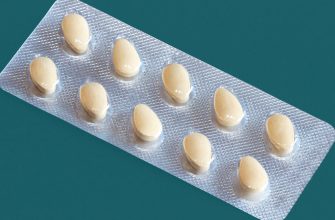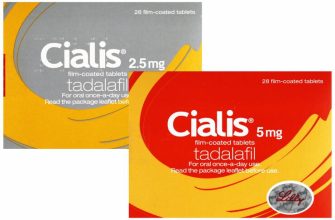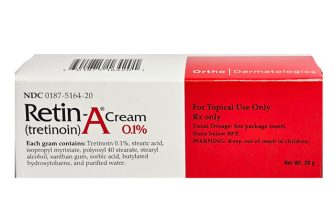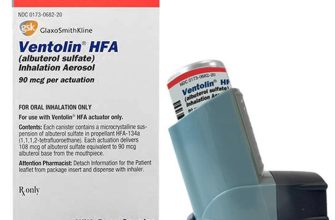For those dealing with hair loss, purchasing finasteride in the USA offers a reliable solution. This medication effectively reduces hair thinning and promotes regrowth. Most importantly, you can find it at local pharmacies or online retailers, making it easily accessible.
Start by consulting your healthcare provider to discuss the potential benefits and side effects of finasteride. Ensure you receive a prescription, as this medication typically requires one. After obtaining the prescription, you have the option to buy it in-person or through reputable online pharmacies.
Research online sources thoroughly; select licensed pharmacies that require prescriptions. Price comparison can help you find the best deal. Generic versions of finasteride are also available, which can significantly lower your costs while maintaining effectiveness.
Consider joining support groups or forums to connect with others who have used finasteride. Sharing experiences can provide insights into the best purchasing practices and help you stay informed about the latest developments in hair loss treatments.
- Buy Finasteride in the USA
- Understanding Finasteride: What It Is and How It Works
- Where to Buy Finasteride Legally in the USA
- Comparing Prescription vs. Over-the-Counter Options
- Cost Analysis: Budgeting for Finasteride Treatment
- Insurance Coverage for Finasteride: What You Need to Know
- Potential Side Effects and Risks of Finasteride Use
- Tips for Discussing Finasteride with Your Healthcare Provider
- Discuss Your Medical History
- Ask Specific Questions
Buy Finasteride in the USA
To buy Finasteride in the USA, visit a licensed pharmacy or use a reputable online pharmacy that requires a prescription. It’s crucial to consult a healthcare professional who can assess your condition and determine the appropriate dosage. Finasteride is commonly used for treating male pattern baldness and benign prostatic hyperplasia.
Prices for Finasteride may vary. Expect to pay between $10 to $30 for a monthly supply without insurance. Many insurance plans cover this medication, so check with your provider for details. Generic options are available, which can lower your costs significantly.
When using online services, ensure they are verified and offer secure transactions. Look for pharmacies that have the Verified Internet Pharmacy Practice Sites (VIPPS) seal. This guarantees their legitimacy and adherence to safety regulations.
After obtaining your prescription, follow the dosage instructions given by your doctor. Typically, Finasteride is taken once daily, with or without food. Consistency is key for optimal results.
Be aware of potential side effects, such as decreased libido, erectile dysfunction, or breast tenderness. Report any unusual symptoms to your healthcare provider immediately for advice on managing them.
Stay informed about any recalls or safety notices regarding medications. Regular follow-up appointments with your doctor ensure your treatment remains effective and safe.
Understanding Finasteride: What It Is and How It Works
Finasteride is a medication primarily used to treat hair loss and enlarged prostate in men. It belongs to a category of drugs called 5-alpha-reductase inhibitors. These drugs block the conversion of testosterone to dihydrotestosterone (DHT), a hormone linked to hair thinning and prostate issues.
When taking finasteride, men may experience slower hair loss and some regrowth in areas susceptible to androgenetic alopecia. DHT contributes to shrinking hair follicles; by inhibiting its production, finasteride helps maintain hair density.
For those considering finasteride, here are essential points:
- Dosage: Typically prescribed in 1 mg for hair loss and 5 mg for prostate conditions. Consult a healthcare provider for the right dosage.
- Timeframe for Results: Hair regrowth may take three to six months to become noticeable, and results can vary among individuals.
- Side Effects: Common side effects include diminished libido, erectile dysfunction, and breast tenderness. Report any significant changes to a doctor.
- Long-term Use: Continuous use is necessary to maintain results. Discontinuing the medication may lead to hair loss resuming.
- Availability: Finasteride is available by prescription in the USA. Consider discussing options with a licensed healthcare professional.
Buy finasteride from reputable pharmacies to ensure product authenticity. Online options exist, but verify the legitimacy of the source to avoid counterfeit medications.
Always have open discussions with healthcare providers regarding personal health conditions and potential interactions with other medications. This ensures that finasteride is a suitable option for individual situations.
Where to Buy Finasteride Legally in the USA
Purchase finasteride at licensed pharmacies to ensure safety and legality. Major chain pharmacies like CVS, Walgreens, and Rite Aid stock this medication. You can also find it at local independent pharmacies; simply call ahead to confirm availability.
Online options are available as well. Websites like HealthGenius and Roman provide a convenient way to obtain finasteride. These platforms require a prescription, ensuring that a healthcare professional reviews your suitability for the medication.
Consider telehealth services such as Hims and BetterHelp. They offer virtual consultations with licensed doctors who can prescribe finasteride if appropriate. These services combine accessibility with professional medical guidance.
Always check for the pharmacy’s credentials, looking for a verified seal from the National Association of Boards of Pharmacy (NABP). This ensures you are buying from legitimate sources.
When purchasing online, verify that the site requires a prescription and has a licensed pharmacist available for consultation. Avoid unregulated websites to ensure your safety.
Comparing Prescription vs. Over-the-Counter Options
For those considering finasteride, the choice between prescription and over-the-counter options is vital. Prescription finasteride is typically considered more reliable. Doctors assess your medical history and needs, ensuring you receive the appropriate dosage and monitoring for potential side effects. Prescription options may also provide access to lower-cost generics depending on your insurance coverage.
On the other hand, over-the-counter (OTC) alternatives offer convenience. You can purchase them without a doctor’s visit. However, OTC products might contain lower doses or alternative ingredients, which may not deliver the same results as prescription finasteride. The lack of professional oversight could lead to misinformation regarding potential interactions with other medications.
Cost differences also matter. Prescription drugs can be more expensive, particularly if you lack insurance. OTC products, while often cheaper, may require long-term or multiple purchases to achieve desired outcomes, thus offsetting initial savings.
Your personal health situation dictates the best choice. Consulting a healthcare provider for tailored advice ensures better outcomes and safety, whether you choose prescription or OTC alternatives. Always prioritize professional guidance in your decision-making process.
Cost Analysis: Budgeting for Finasteride Treatment
Anticipate spending between $30 and $100 per month for finasteride, depending on the pharmacy and whether you choose brand-name or generic options. Generic finasteride typically offers significant savings while maintaining effectiveness.
Insurance coverage can affect these costs. Review your health plan to see if it covers finasteride. If it does, your out-of-pocket cost may decrease substantially. If not covered, consider using patient assistance programs offered by manufacturers or discount cards available through various websites.
Alongside medication costs, assess potential additional expenses. Routine check-ups or blood tests may be necessary to monitor treatment progress and side effects. Allocate about $100 to $200 annually for these consultations.
Below is a simplified cost breakdown for budgeting:
| Expense Type | Monthly Estimate | Annual Estimate |
|---|---|---|
| Finasteride (Generic) | $30 | $360 |
| Finasteride (Brand) | $80 | $960 |
| Routine Check-ups | $8.33 | $100 |
| Total (Generic) | $38.33 | $460 |
| Total (Brand) | $88.33 | $1,060 |
Plan financially for at least one year. Evaluate your budget regularly to adapt to any changes in healthcare costs or personal financial situations. Taking these steps ensures you maintain treatment without interruption.
Insurance Coverage for Finasteride: What You Need to Know
Check your insurance policy details to determine coverage for finasteride. Many plans include it under their prescription drug benefits. Contact your provider to clarify any specific requirements or limitations.
Be aware that some insurers may only cover generic versions of finasteride. Verify whether your plan distinguishes between brand-name and generic medications to maximize your benefits.
Consider utilizing a pharmacy benefits manager (PBM) or an online prescription service that may offer discounts. These can sometimes provide lower out-of-pocket costs even if your insurance does not fully cover the medication.
If finasteride is not covered by your insurance, ask your doctor about alternatives or patient assistance programs offered by pharmaceutical companies. These programs may help reduce the cost for qualifying patients.
Keep all receipts and records of prescriptions filled. If you encounter issues with coverage, having documentation can facilitate discussions with your insurance company or healthcare provider.
Finally, review your plan annually, as drug formularies can change. Staying informed about your coverage ensures you make the most of your insurance benefits.
Potential Side Effects and Risks of Finasteride Use
Using finasteride may lead to several side effects. Users should monitor for sexual dysfunction, which can include reduced libido, erectile dysfunction, and ejaculation issues. These symptoms can affect some individuals, causing concerns about long-term use.
Another area to consider is hormonal changes. Finasteride alters levels of dihydrotestosterone (DHT), potentially resulting in breast tenderness, enlargement, or even discharge. Regular check-ups with a healthcare provider can help manage these risks.
Psychological effects such as mood swings, depression, and anxiety have been reported in some individuals taking finasteride. If these symptoms arise, consulting a healthcare professional for support and possible adjustment of treatment is crucial.
In rare cases, finasteride can lead to severe allergic reactions, including rash, itching, and swelling, particularly of the face or throat. Seek immediate medical attention if any signs of an allergic reaction occur.
Some studies also suggest a potential link between finasteride use and prostate cancer risk. Discussing personal health history with a healthcare provider ensures tailored advice and possible screening considerations.
Making informed decisions about finasteride use includes weighing these potential side effects with the benefits of treatment. Regular communication with a healthcare professional helps navigate any challenges that may arise during treatment.
Tips for Discussing Finasteride with Your Healthcare Provider
Prepare a list of your symptoms and concerns regarding hair loss. This helps you clearly communicate what you have experienced and why you are considering treatment with finasteride.
Discuss Your Medical History
Share any relevant medical conditions, medications you are currently taking, and any past experiences with hair loss treatments. Being transparent offers your provider a better understanding of your situation and helps in evaluating the appropriateness of finasteride for you.
Ask Specific Questions
- What are the potential side effects of finasteride?
- How long will it take to see results?
- Are there any lifestyle changes or additional treatments you recommend?
- What happens if I stop taking the medication?
Express your concerns regarding side effects and inquire about monitoring strategies. Discussing these aspects helps you stay informed about what to expect during treatment.
Inquire about the likelihood of hair regrowth and how finasteride works. Understanding the mechanism can clarify expectations and alleviate any uncertainties.
Conclude your conversation by summarizing your understanding of the treatment plan and asking for clarification on any points that remain unclear. This ensures both you and your provider are aligned on the next steps.










